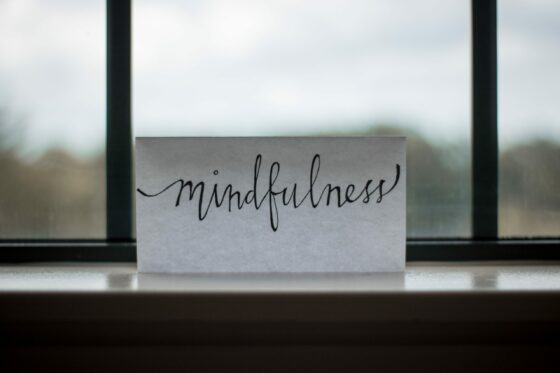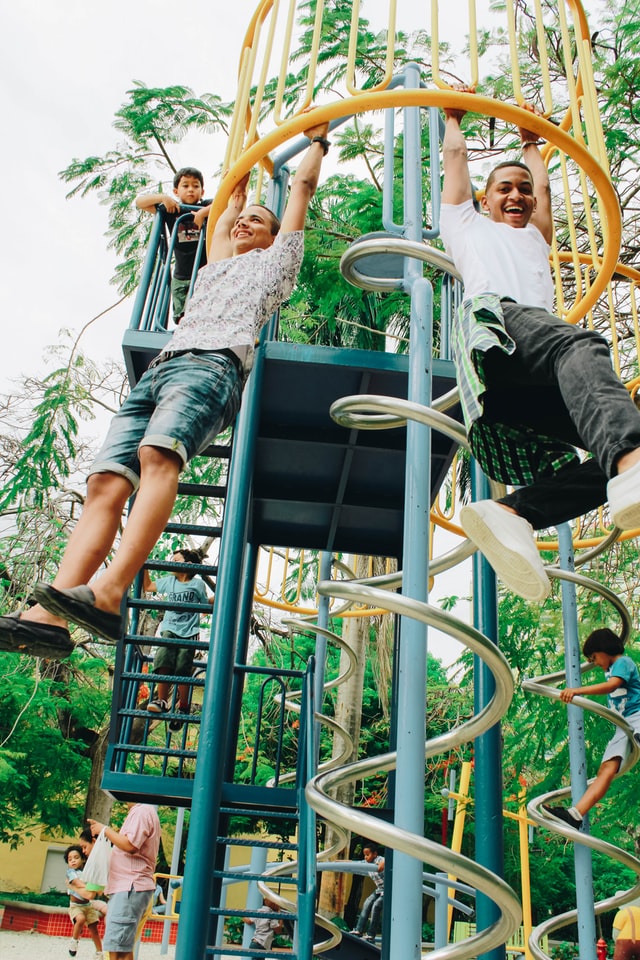 Stress tends to be higher during the holidays. More to do, plan, and get done before a deadline. Even if life is fun during the holidays, people around you might be stressed and you can feel it–and so can your kids no matter what their ages. Taking extra time to practice Mindfullness is important for ourselves and our families. Mindfulness can be a great tool to keep us stay grounded so that our stress doesn’t get the best of us. The Imagine Project is a form of Mindfullness, it helps with processing how we feel, as well as centering ourselves.
Stress tends to be higher during the holidays. More to do, plan, and get done before a deadline. Even if life is fun during the holidays, people around you might be stressed and you can feel it–and so can your kids no matter what their ages. Taking extra time to practice Mindfullness is important for ourselves and our families. Mindfulness can be a great tool to keep us stay grounded so that our stress doesn’t get the best of us. The Imagine Project is a form of Mindfullness, it helps with processing how we feel, as well as centering ourselves.
But what does mindfulness really look like? Mindfulness is the conscious decision to be present in the moment, paying attention to how you feel in your body, mind, and emotionally– as well as how your kids are feeling. The trick is to do listen, watch, feel from a nonjudgmental place—a place of noticing and letting go of anything that doesn’t serve you. It actually really works! Research even shows that noticing—just noticing what’s happening in your mind, head, and heart, without trying to fix or change it, just watching and noticing it—allows it to move through and move on. Noticing and acknowledging anything your children, spouse, etc. might be feeling will help them feel heard and let go of anything that might not be helpful for them. Research also shows that mindfulness helps improve immune function (fewer illnesses), increases concentration, strengthens resilience, as well as many other positive effects.
So how do we do this? Experiment and practice—with ourselves, and our kids. Noticing your breathing is always a great place to begin. Bring your attention back to your breath, and practice long, slow, mindful breathing. This is key to embracing the moment and restoring or strengthening calm in your brain and body. Try sitting quietly and gently paying attention to your breath, counting slowly as you breathe in and out. The goal is breathing in to a count of about 4 or 5, and breathe out with a count of 6-7. Longer exhales helps your body relax more. You may have to work at going this slow, but just try it at your own pace and work at moving to a slower, deeper breath. Then practice at other times too, in your car, waiting in a doctor’s office, or watching TV. The more you experiment and work at it, the more prepared you’ll be when you really need it to calm yourself in stressful situations!
Practicing mindfulness with kids happens when you create quiet times with them and show them techniques and tools to help them calm down. Here are a few tips to help:
- Sit and do the breathing technique together or when you feel your child is stressed—practicing together really helps.
- Have a snack or even cook together. Noticing the food: the taste, the smell, the textures.
- Go for a walk, notice what’s going on around you in nature; the clouds, the weather, the landscape—look for 4 leaf clovers or dig in the dirt.
- Read together, do a puzzle, chase bubbles, draw, or paint.
- Share a breathing hug together, take a few soft, slow breaths as you hold each other.
- Notice and share how you are feeling, your body sensations and how they match your emotions and thoughts.
- Write your Imagine stories together.
Mindfulness combats stress by allowing us to slow down our minds so we can pay attention to what’s happening in our bodies and emotions. Then the emotions can move through our minds and bodies, which will lessen our stress. Sometimes it’s difficult to connect to and understand how we feel, this is where The Imagine Project comes in. Writing your story, each sentence beginning with the word Imagine… helps put our feelings out into the world, helps us process our experiences that are causing stress, move through them, calming our minds and bodies—the goal in combating stress.
Try writing your imagine story with your child and/or your students. The process is free, simple, and prompted by a 7-step journaling process. Go to www.theimagineproject.org to learn more about The Imagine Project and download the journals. Give it a try, it will help calm your’s and your child’s stress, while giving the opportunity to Imagine new possibilities in life!
Here is a wonderful website to help you get started with Mindfulness: Mindfulness and Meditation Matters.
Dianne Maroney, RN, MSN
The Imagine Project, Inc., is a nonprofit organization that helps kids, teens, and adults overcome challenging life circumstances through expressive writing. Dianne is a thought leader in the area of stress and trauma in children. Her simple, yet profound 7-step writing tool, now used by schools across the US and internationally, gives kids and teens the opportunity to rewrite a challenging personal story and Imagine new possibilities in its place.

 If you’re used to being self-critical, it might be difficult for you to understand what being self-compassionate is like. Self-compassion is defined as treating yourself with kindness and understanding during difficult times or when you feel like you are not good enough. For kids and teens, this is thinking, “It’s okay if I didn’t get an award today. I will do better next time” instead of telling themselves, “I’m such a loser. I can’t do anything right!”
If you’re used to being self-critical, it might be difficult for you to understand what being self-compassionate is like. Self-compassion is defined as treating yourself with kindness and understanding during difficult times or when you feel like you are not good enough. For kids and teens, this is thinking, “It’s okay if I didn’t get an award today. I will do better next time” instead of telling themselves, “I’m such a loser. I can’t do anything right!” When we think about healing, many of us focus only on our physical bodies. In reality, there is a great deal of research showing our minds lead the way for our bodies. What we think drives what we do, how we behave, and how we interact. Our thoughts even affect our cellular structure. Scientists used to believe that the body was made up of only physical matter; it functioned in specific ways and was only affected by other matter such as chemical responses (medications), surgery, and other physical modalities. Now we know the body is more than matter—it’s energy, and can be affected by many things, particularly the mind.
When we think about healing, many of us focus only on our physical bodies. In reality, there is a great deal of research showing our minds lead the way for our bodies. What we think drives what we do, how we behave, and how we interact. Our thoughts even affect our cellular structure. Scientists used to believe that the body was made up of only physical matter; it functioned in specific ways and was only affected by other matter such as chemical responses (medications), surgery, and other physical modalities. Now we know the body is more than matter—it’s energy, and can be affected by many things, particularly the mind. I was recently sitting and talking with a dear friend who has successfully beat cancer. As we talked she shared that she was beginning to realize her cancer diagnosis was fueled by childhood and current chronic stress. As a young girl she was pushed hard to be perfect, basically keeping the peace in the family through her successes. A heavy toll to carry for a 7-year-old. She continued in adulthood to care for others more than she cared for herself. She ate well, exercised, worked hard and is very successful, and she has a deep faith—but it’s her emotional health she tended to neglect—something she learned as a child.
I was recently sitting and talking with a dear friend who has successfully beat cancer. As we talked she shared that she was beginning to realize her cancer diagnosis was fueled by childhood and current chronic stress. As a young girl she was pushed hard to be perfect, basically keeping the peace in the family through her successes. A heavy toll to carry for a 7-year-old. She continued in adulthood to care for others more than she cared for herself. She ate well, exercised, worked hard and is very successful, and she has a deep faith—but it’s her emotional health she tended to neglect—something she learned as a child. Stress is running high right now. Everyone is feeling it, whether it’s a change in our everyday routines, being worried about a loved one, or the extreme stress of losing your home and/or job. If adults are feeling it, so are our children—no matter what the age. We all need some help coping. Mindfulness can be a great tool to keep us grounded so that our fear and worry emotions don’t get the best of us. The Imagine Project is a form of Mindfullness, it helps with processing how we feel, as well as centering ourselves.
Stress is running high right now. Everyone is feeling it, whether it’s a change in our everyday routines, being worried about a loved one, or the extreme stress of losing your home and/or job. If adults are feeling it, so are our children—no matter what the age. We all need some help coping. Mindfulness can be a great tool to keep us grounded so that our fear and worry emotions don’t get the best of us. The Imagine Project is a form of Mindfullness, it helps with processing how we feel, as well as centering ourselves. As a parent, we are often looking for things to do with our children during the long summer months when they are out of school and home. Our days can be filled with trips to visit loved ones, to explore new areas, or to relax as a family. We may stay close to home and take time to bond with a trip to the zoo or museum, take a cooking class together, hit a library or take in a movie.
As a parent, we are often looking for things to do with our children during the long summer months when they are out of school and home. Our days can be filled with trips to visit loved ones, to explore new areas, or to relax as a family. We may stay close to home and take time to bond with a trip to the zoo or museum, take a cooking class together, hit a library or take in a movie.